Nonfics is now a newsletter! Please support documentary criticism by subscribing here: nonfics.substack.com.
The last decade has seen a rise in pop star documentaries that are anything but puff-piece profiles or feature-length marketing schemes. Well, maybe some of them are planned as part of an artist’s commercial branding but they don’t always result in mere promotional content for fan consumption. Many of them employ distinguished nonfiction filmmakers, such as Lana Wilson, Asif Kapadia, Morgan Spurlock, and R.J. Cutler, each of whom brings a unique approach to this subgenre of music doc that transcends the potential for parody.
The latest example of a master of documentary craft delivering an extraordinary pop-star-focused film is Cutler’s Billie Eilish: The World’s a Little Blurry. Whether you love Billie Eilish or you have never even heard of her — let alone know anything about her and her music — this documentary offers an enthralling coming-of-age narrative through impeccable storytelling in the Direct Cinema tradition. That’s no surprise coming from Cutler, who produced D.A. Pennebaker and Chris Hegedus’ Oscar-nominated political doc classic The War Room and directed the brilliant behind-the-scenes fashion film The September Issue.
In March of this year, I got on the phone with Cutler for what was supposed to be a brief discussion of The World’s a Little Blurry. We talked for twice as much time as was arranged because he’s so profoundly thorough when talking about his work, and just as with his new film, which runs two hours and twenty minutes, it’s good to go long when you have the material to serve a compelling and comprehensive picture of your subject. Not to say that this interview is on the level of his film, but for his part in both, what you get is fantastic.
Here is our conversation in full:
Even though I’m not that into pop stars, I’m very much interested in this genre of the pop star documentary, going back to one of my favorite films, Lonely Boy, and I also love Justin Bieber: Never Say Never — which is actually talked about in The World’s a Little Blurry. What is your history with and interest in these kinds of films?
Well, this film is very much inspired by two pop star documentaries, but they come long before [one of] the ones you’re talking about. The films that inspired me and that I spoke to Billie about the day I met her were Don’t Look Back, D.A. Pennebaker’s film about Bob Dylan, and Gimme Shelter, the Al and David Maysles [and Charlotte Zwerin] film about The Rolling Stones at Altamont.
Both in terms of the intimacy that I aspired for in this film and the emotional access and the honesty and the shooting style of performance, those films were very much part of how I approached making this film. The other films you’re referencing I think I am almost entirely unfamiliar with.
Does it seem to you that it is obligatory now that a pop star receives a documentary like this either at the start of their career or when there’s some significant change in their career?
I have no idea. I really don’t. It’s not on my mind.
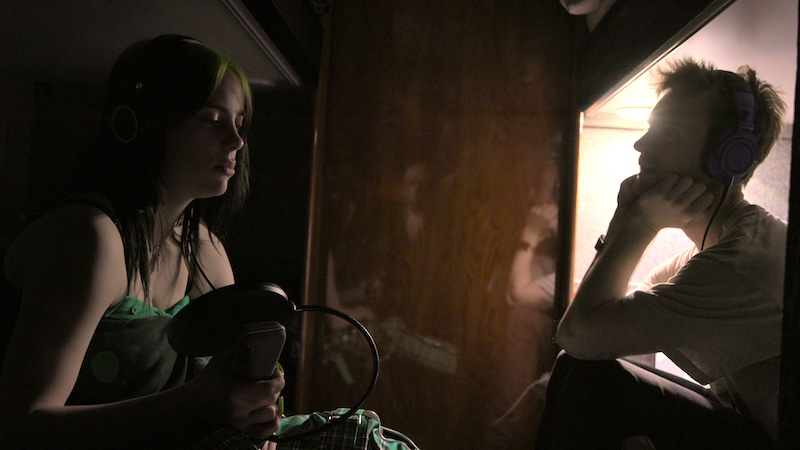
So, how did you get recruited for this? I know that you were invited to do it, so how did it come to you? And why did you take it on?
Well, how it came to me, you’d have to ask Billie. I suspect she had seen other work of mine. Certainly, we talked about some other things that I had done, when we first met. If I Stay and Nashville on the scripted side. I don’t know if she had seen The September Issue or The War Room. I know [her mother] Maggie had. You have to ask them why they thought to ring me up.
But I decided I wanted to make the film when I met Billie. When I went to her house and spent time with her and Finneas [O’Connell] and [her father] Patrick and Maggie. I was so kind of immediately engaged and excited about the possibility of doing a real — a verite film. While I was there, it was clear to me that the approach would want to be purely verite. Which is a big deal different to be filming in that way as opposed to be filming in a way that approaches, you know, the documentary more informationally or more as an explanation.
But it was very clear to me that this story would want that approach, and I was just very excited about our conversations. So I left there thinking, well, this would be something I would want to do, and I also was very curious about the dynamic with Finneas. And then most of all, I felt here was the chance to tell the story of a young artist coming of age and a young woman coming of age, and the fact that those two narrative through-lines would resonate with each other was very intriguing to me.
I think it’s interesting also because in The World’s a Little Blurry we see so much of how Billie doesn’t come off as always wanting to do the obvious PR stuff, so even if it seems like an obligation for pop stars to do a documentary now, that’s not something she would do just because of that. She obviously wanted to do a film like this for her own reasons.
Yeah, you know what’s funny is, I don’t believe I’ve ever talked to a subject about why they want to do something. I like to say that if somebody invites you to a party, you don’t ask them why. You go to the party and grab a handful of cashews. I learned early on not to ask why. Why you’ve agreed. And by the way, it’s a fun and funny thing to say, but it’s really true: the reasons are so complicated. And they’re so personal. In an important way, it’s none of my business why she wanted to do it.
You’ve referenced a few times this concept that it’s an obligatory part of being a pop star. Again, music critics and those who consider the music industry or where the documentary industry and the music industry overlap can speak to that, but it was never my sense that… You’re right, Billie’s not going to do something she doesn’t want to do, and I don’t believe there’s any aspect of her career that she isn’t kind of engaged in other than those that she has chosen to be engaged in.
You do seem to get people you wouldn’t expect — or whom I wouldn’t think — would want to be documented so closely, like Dick Cheney and Anna Wintour.
Well, you know, I think it’s human to want your story told. I think there’s something very human about that, and I will tell you that while it seems like the vice president and Anna might not have wanted films made about them, in fact, the opposite is true. Otherwise, I wouldn’t have been able to make the film. And also in their cases, as with Billie, they all granted me final cut, and it was not difficult to achieve that with any of them. They all understood why I would have final cut, kind of almost from moment one. I think, in fact, from moment one with all three of them.
This ties back to what we were talking about, which is the deeply personal motivation for wanting to tell your story or to have your story told and to be willing to share it with someone and trust somebody to tell it.

I actually want to talk about trust in another way, too, that I thought about with this film because it starts so early in Billie’s career. A lot of documentary filmmakers talk about how they had to gain the trust of their subjects, but I’m curious about how you trust that the subject will even be a story. And it makes me also think about The War Room, which begins before it’s really thought that Bill Clinton would be the candidate in the end. To start so early in someone’s story is fascinating to me.
Well, it’s true. But you should know in both cases that the movie begins before our filming started. With Bill Clinton, we started shooting deep into the political season, and then we had the great good fortune of the brilliant Kevin Rafferty having shot a lot of footage in New Hampshire, verite-style. And he made that footage available to us, and it’s a big part of the film.
But there are all sorts of ways of approaching. In this case, Billie is born in 2001, so much of her life is filmed simply because, you know… Much of my daughter’s life is filmed — she’s six now; I’ve got an iPhone full of her, of verite footage of her. In the case of Billie, Maggie was filming just because mothers love to film their kids, and so there was a lot of personal archive to work with. And books of DVDs and hard drives full of raw family footage were made accessible to us. Of course, we had to make it work. It’s raw footage. But they were very generous in sharing it with us.
So in that first scene of Billie and Finneas writing a song, are they just documenting their process at the time?
Yeah, they’re documenting their own process. Look, they had a sense that something exciting was going on in that bedroom, and I have footage of Maggie actually hanging a GoPro and saying to them, “If you ever feel like there’s anything you want recorded, the camera is here.” I think in part they did it for posterity. In part, they did it because Maggie is a filmer. In part, they did it as a record, should they ever want to go back and look at things that they came up with while they were writing. And they probably thought maybe one day this will be… the record of what is being captured in here will have historical significance.
All four of those things turned out to be reasons for doing it. For me, it was thrilling; it was great to get all this raw footage. Listen, a lot of it was dozens of hours of footage of those guys not writing. But the footage that we had of them writing that we were able to shape into the scenes that you see at the beginning of the film was incredibly valuable.
It’s definitely impressive how seamless it is. And I guess some of that is that the quality of our phone cameras is so great now that that footage blends so well with professionally shot footage.
Well, it’s a lot of things. It’s certainly the quality of the phone, there’s no question, and the quality of GoPros, and the quality of the technology that finishes — you know, that we use when we’re finishing these films, whether it’s the mix or the color grading. It’s so advanced, and you can really do great things with it.
But also this conversation has to include the incredible genius of Greg Finton and Lindsay Utz, who were my editors. And the work that we did together. There are a lot of ways to edit the dozens and dozens and dozens of raw footage of the family that we received, but Lindsay and Greg’s work, of course, brought this family to life, brought this artistic process to life, and achieved that very intimacy we were aspiring to. And that’s the fundamental part of it, I believe.
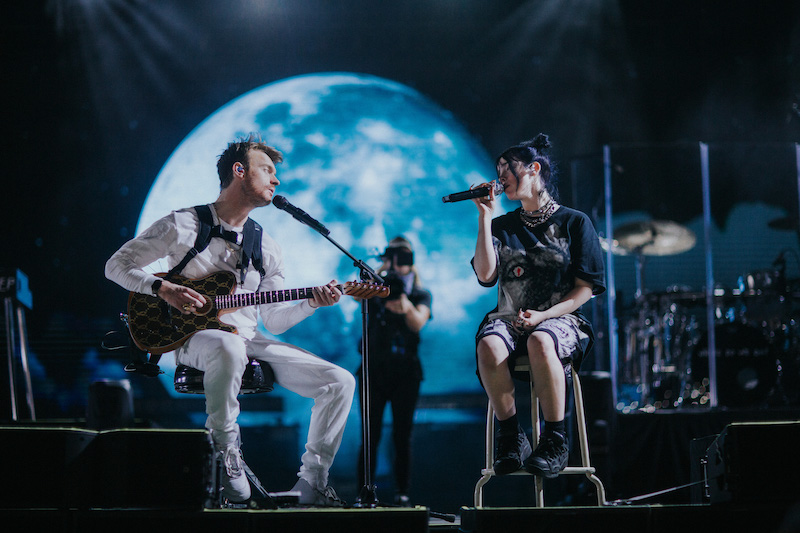
I want to talk about the word “intimate,” which I think is very interesting with films like this. It’s something you probably aimed for, and it’s something that this doc is marketed as. But then it’s also used by most critics as their one word of praise, which is funny because that’s literally what The World’s a Little Blurry is trying to do, right?
Is there a goal that you try to achieve regarding intimacy? And is it easier now because people are always filming themselves anyway? I wanted to ask what that means to you, the idea of intimacy, with a film like this. And is that something that is a positive or is it just something that’s a natural aspect of these kinds of films now?
I don’t see it that way. I’m trying to parse your question because I’m not sure the options you’re giving me are consistent with how I would describe it. I certainly don’t see it as commonplace or a byproduct of the fact that people are on camera. I think it all has to do with the dynamic between the… with the process. The verite process achieves a level of intimacy that I don’t believe you can… I think that’s what verite is all about it, achieving that level of intimacy so you can explore both the intimate and… in the case of Billie, the intimate and the affect at the same time.
That’s what was exciting to me. You can go on this journey that is both about this great artist emerging as an artist and this young woman emerging as a young woman. You can find the resonances between them because you’re having approached this with the verite approach, which is fundamentally built on trust. You have access to your subject in a way that is intimate and emotional and honest. I don’t know that that necessarily answers your question, but that’s what I want to say about achieving intimacy.
You see it in the history of verite films. Look at The War Room, it’s a perfect example. Penny and Chris made this incredibly intimate film about electing a man president. It’s simultaneously writ large and very much about these two men, James Carville and George Stephanopoulos, whose lives are changing before your eyes. But not because they’re becoming president but because of the role that they’re playing in this larger thing.
You could probably do this with… The intimacy between Anna [Wintour] and Grace [Coddington] is a byproduct of us approaching the film in a purely verite approach that has, at its core, the earning of the subject’s trust. And the conviction that the story belongs to the subject, not to us. So that we understand there’s a kind of collaboration going on between the subject’s life and the filmmaking approach, which is how I see these films. It’s very much a collaboration between Billie’s life and my filmmaking.
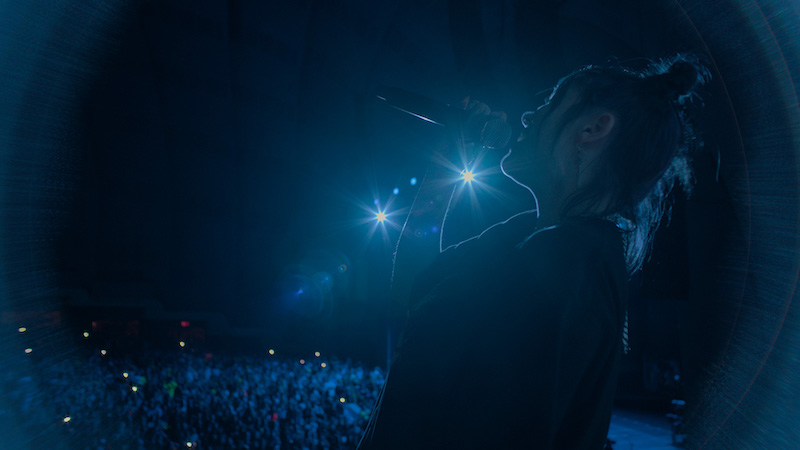
Since you’ve been doing this kind of film for a while, have you not seen any change at all because people are now in front of cameras taking selfies and Instagramming? And even with reality TV? That people are used to being intimate in front of a camera more?
I’m not convinced that’s true. I don’t think reality TV has anything… I understand the question. I think it’s a great question, don’t get me wrong. I think it’s a really cool thing to talk about. I think one would suspect we’re all used to being on camera.
Or, for instance, let me give you what I think is a really good example: How many people are filming Billie in performance during one of her shows, like at Coachella? Or, better yet, at South Street Seaport where she does “Wish You Were Gay” and “I Love You”? How many people are in the audience filming her? Hundreds? Thousands? And yet none of that footage achieves the intimacy and the emotional kind of honesty and the presence that the footage we shot did because our approach is a completely different thing.
And then, of course, nobody is filming Billie in the dressing room afterward as she’s confronting this emotional experience she’s had in getting ready to go out to that meet and greet, which is such a significant kind of moment in the film. None of that has to do with the fact that Billie is used to being on camera. Reality TV has really nothing to do with it. It’s just a coincidence.
There are ways of drawing lines between them, but the people who choose to be on reality TV and the approach and the professional dynamic there and all those things are just completely different than this. Because Billie trusts me, and Billie trusts Jenna [Rosher] and Jae [Kim] — the person holding the camera and the sound person. Billie is able to be herself in that moment because she’s as comfortable being herself in that moment with us as she is with anybody with whom she’s truly comfortable with being herself.
This is why I don’t embrace the notion of “fly on the wall.” We’re not flies on the wall. I’m 6’1″; I can’t be a fly on a wall. I’m a person in a room. Jenna is a person in a room with a camera. Jae is a person in a room with a microphone. Billie is a person in a room. The relationship between those four people in a room needs to be such that the subject is entirely comfortable being themselves. And that only comes because the subject trusts the filmmakers.
I want to talk about Billie’s parents because one of my favorite things about the doc is how much we see of them, especially her mother. I wanted more of them, especially her father, though his minimal appearance in the film makes that one interview monologue moment of his all the better. I loved that The World’s a Little Blurry is not just all Billie and I wondered if it was a conscious effort to put them in more or if it just kind of happened that way.
A number of your questions are suggesting a kind of calculation in the design, which is… They’re in the film because how can you tell a story about Billie Eilish that is not a family story? I don’t know how you would do it. I guess you could do it, but it’s not the truth that I experienced.
The film is not a calculation. It’s an artistic response to what I witnessed and experienced in a year of time with Billie and her family. So they’re in there because, you know, I’m telling the story of Billie getting her driver’s license. Well, that’s in every teenager’s life. That’s a story about the teenager, but it’s also a story about those whom she’s driving away from and those whom she’s driving towards. That’s certainly how I experienced it here.
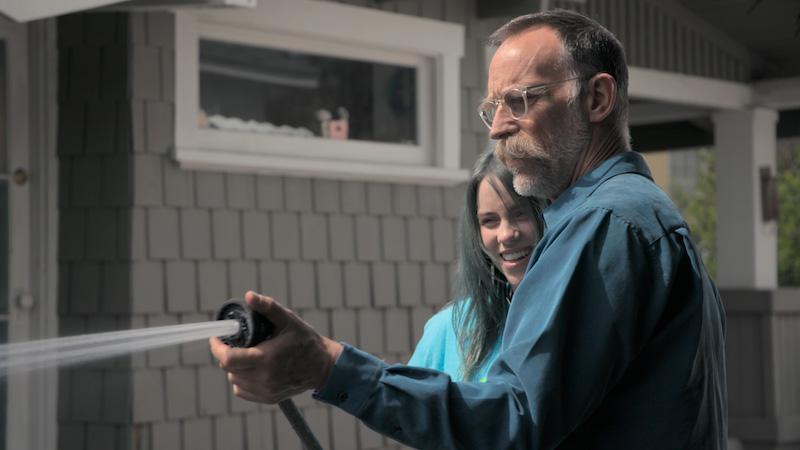
But I love the stuff that’s just with the parents, too. You don’t get to see that a lot.
Yeah, it’s beautiful. That speech that Patrick gives is so universal, even as it’s so specific, which is again one of the great opportunities that this film provides. Only Billie Eilish has Billie Eilish’s life, and yet there’s so much in her life and so much in her story that teenagers coming of age relate to — and by the way, we are all either now or once were or will be teenagers coming of age, so it becomes universal in that way — and that parents relate to.
There’s so much in this story that resonates for parents. When Patrick gives that speech, it’s kind of this profound articulation of what it’s like when the nest empties. And it also gives insight into the kind of existential philosophy that informed Billie’s childhood. So that when she says “I’m here now, and one day I’ll be gone; what’s the point of doing anything other than the work that is truest to me?” you understand where it comes from.
What do you find easier or more enjoyable as a filmmaker, following subjects like this, as the events and lives are happening and it’s unpredictable where they’re going, or doing something more archival like your last film, Belushi?
They’re different approaches and different experiences. It’s hard for me to say one’s more… They’re all deeply meaningful, I want to say. They all have their own very significant challenges. Verite is a kind of profound personal experience because you float into somebody’s world, and their lives and your relationships are very dynamic, and you’re with a team, and your being present in that moment is such a critical thing to be, over the coarse of an entire year.
But telling John Belushi‘s story has its own unique challenges as well that are very deep and emotional and personal. I don’t know. Mostly I’m kind of, you know, counting my blessings that in a single year I had the opportunity to make a film about John and a film about Billie. But it’s hard for me to say that I enjoy one over the other.
There’s something that I believe very deeply in with the verite approach to storytelling for the right stories and the right situations with the right subjects. The World’s a Little Blurry is one. It was a very powerful experience to see what we saw, to have this instinct that there was such a rich story to tell, both about a young artist coming of age and a young woman coming of age. And to have access to the family, to witness the creative process, and then for the things to happen to Billie that happened. None of us knew that it was going to be that kind of a year. It was very, very rich.
For me, it seems scary to have that kind of unpredictability, but I bet it’s also very thrilling to not know where it’s going.
Well, that’s the thing. I love it, but I learned from Penny and Chris that to want it to be anything would be a mistake. To want to know where it’s going is something you — that’s not a tool in your toolbox. That’s something you leave behind. What you want is to be with the subject in the moment. What you want is to see it all as clearly as possible. But you can’t want to know what’s going to happen. Because it’s not what I want. It’s got nothing to do with me. It’s about what Billie wants or what Billie is experiencing. That’s the way you get to be able to see the story that you then tell.
I get it. I get why you say that. It’s exciting. We love it because we’ve lived through it, and we trust in the process. We filmed for a year. A lot of your time is spent not filming at all. A lot of your time is spent just developing your relationship with the subject. And earning their trust. People say to me, “Well, what happens when she tells you to stop shooting?” And I’m like, well, if she tells us to stop shooting, we stop shooting. But long before she tells us to stop shooting, we’ve stopped shooting. I always tell my crew: let’s stop ten minutes before someone asks us to stop. Because who wants to film somebody who doesn’t want to be filmed?
And if you get a feeling that your subject is… that the process is weighing too heavily on them in a given moment or on a given day, some days it’s best to put the camera down and have a vegan doughnut. And spend some time together as people, not as filmmaker and subject.
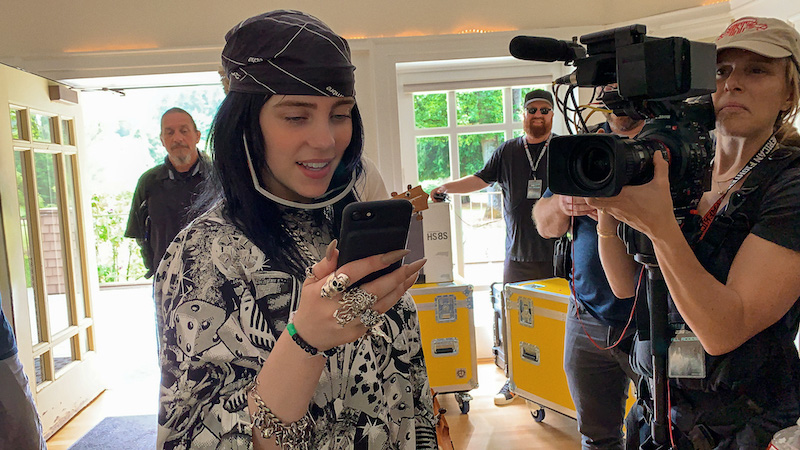
That’s a special sense that you have to have, to know ahead of time to turn the cameras off before they would ask for it.
I think it’s about being instinctually in the moment. And a DP like Jenna Rosher or a sound recordist like Jae or a director like myself, we’ve… this is why I describe it as a discipline and something that you have faith in. It’s a process you have faith in.
I know some filmmakers even in this approach have expectations or desires for where the story will go, such as in an election or a court case or, in the case of Billie Eilish, it’s with awards and other professional achievements and outcomes. And I guess if the film ends up about a person who wins an election or wins awards, that makes it more easily sold to audiences.
I don’t think about any of that stuff. What’s all that? I don’t care if she wins awards. I don’t care. I genuinely don’t care. It’s a good point to stop shooting. But I made a film [A Perfect Candidate] about Oliver North losing a senate campaign.
I don’t want to be disingenuous about it. I know that there is a business side to this. Obviously, I know that. It’s been a conviction of my career that this material is going to garner big audiences and have commercial viability. I’ve been saying that since 1992 when we did The War Room. It’s clear. This is very evident to me. This is very exciting that there’s such a vibrant marketplace for our work, and the emergence of streamers has only made that clearer.
But I think winning or losing is not of the essence to that. I think telling a powerful narrative is, and making a great film is. And that’s what we want to do. Life presents life. Our privilege is the opportunity to work with that material. But if I’m sitting there hoping she wins or loses, or more specifically, hoping she wins, then that’s me wanting something from the film. And I’m not. I can’t. You can only want to see with clarity. It’s the only thing you can want. And you want to be in the room. You want to be there and you want to be seeing with clarity.
Well, I definitely love that there are different approaches to doing this.
It is very interesting, and there are multiple approaches. What did Mike Nichols say? [Paraphrasing] “Directing is like making love — you never get to see anybody else do it, so you don’t know if you’re getting it right or not.” It’s true. We don’t. Every filmmaker is going to have their own approach. And that’s really fascinating.
R.J. Cutler’s Billie Eilish: The World’s a Little Blurry is now streaming on Apple TV+.




